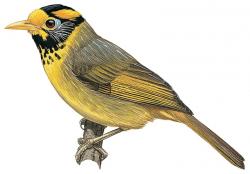The population of endemic babblers at the Mount Kanlaon Natural Park on Negros Island continues to drop owing to habitat loss and human-induced air pollution, a study published recently in the Sylvatrop Journal of the Ecosystems Research and Development Bureau (ERDB) of the Department of Environment and Natural Resources (DENR).
Mount Kanlaon Natural Park is a protected area covered by the National Integrated Protected Areas System Act. With a total area of 24,388 hectares—characterized by cool, dense forest—the park is home to a diverse wildlife, including wild boar, civet cat, leopard cat, spotted deer, and a variety of bird species. Mountaineers frequently trek Mount Kanlaon, which is an active volcano, because of its aesthetic beauty and the perfect place to commune with nature when on Negros Island.
In Sylvatrop’s special issue with the Biodiversity Conservation Society of the Philippines, proponents of the study revealed both Negros babblers—the flame-templed babbler (Dasycrotapha speciosa), which is endemic to Negros and Panay, and striped babbler (Stachyris nigrorum), which exclusively found on Negros, have been classified as endangered by the International Union for Conservation of Nature (IUCN).
As of 2015, BirdLife International indicated that the population of flame-templed babbler on Mount Kanlaon ranged from 2,500 to 9,999 individuals. This was greater than the 600 to 1,700 mature individuals for striped babbler, according to the report.
The decrease in the population of the species, estimated from 50 percent to 90 percent, is believed to be continuing.
“[We should] intensify regular forest monitoring on Mount Kanlaon; establish and revisit biodiversity-monitoring system for the population of babbler species,” according to Sylvatrop authors Andrew T. Reintar, Shaira Grace B. Pios and Dennis A. Warguez.
Source: Business Mirror, 17 September 2017
https://businessmirror.com.ph/negros-islands-endemic-babbler-birds-cont…

- Login om te reageren
